Art can be a powerful way to tell a visual story and preserve
history. These 10 artworks from our collection trace Singapore’s
pivotal historical, social, and cultural moments.
Across the themes of colonial legacies, post-war realities,
nation-building, industrialisation, and the shaping of contemporary
identity, each work reflects a different facet of our country’s
complex and evolving narrative.
10 artworks featuring pivotal moments in Singapore’s history
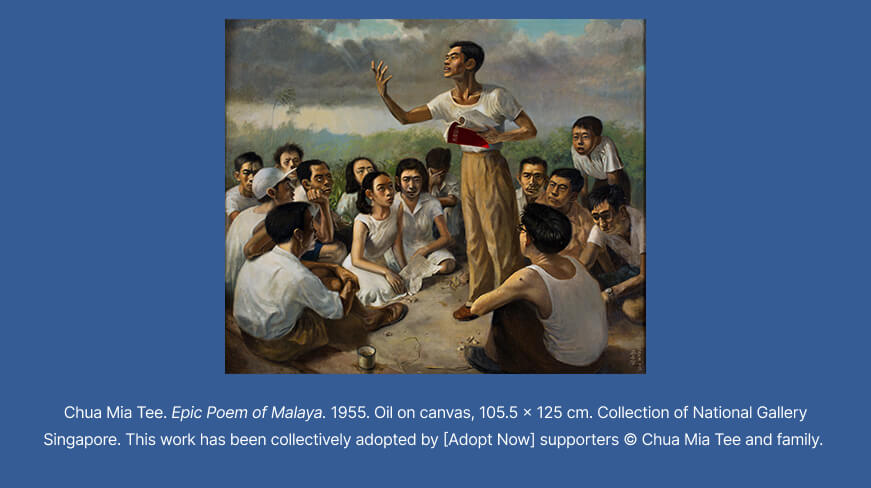

Epic Poem of Malaya
A masterpiece in social realism, this painting captures a
group of idealistic youths engaged in an intense intellectual
exchange. Painted in 1955, it reflects the spirit of
anti-colonial nationalism that was surging across Malaya and
Singapore.
The work captures the urgency of a generation on the cusp of change, leaving behind a lasting impression as both a visual manifesto and a portrait of the generation that would shape Singapore’s future.
Located at: DBS Singapore Gallery 1
The work captures the urgency of a generation on the cusp of change, leaving behind a lasting impression as both a visual manifesto and a portrait of the generation that would shape Singapore’s future.
Located at: DBS Singapore Gallery 1
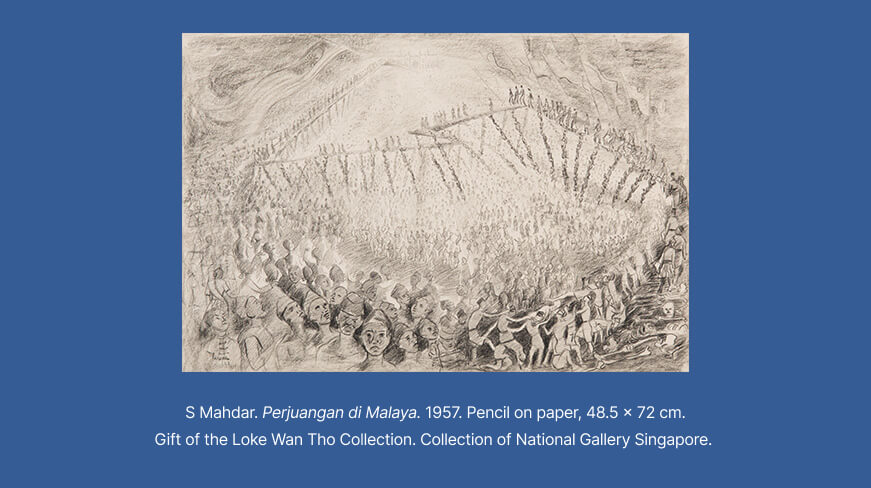

Perjuangan di Malaya
Translated as “Struggles in Malaya,” this dynamic painting
portrays scenes of resistance and resilience during the
Malayan Emergency (1948–1960).
It serves as a visual reminder of the socio-political upheaval and the complex road toward independence, highlighting the sacrifices of common people.
Located at: DBS Singapore Gallery 1
It serves as a visual reminder of the socio-political upheaval and the complex road toward independence, highlighting the sacrifices of common people.
Located at: DBS Singapore Gallery 1
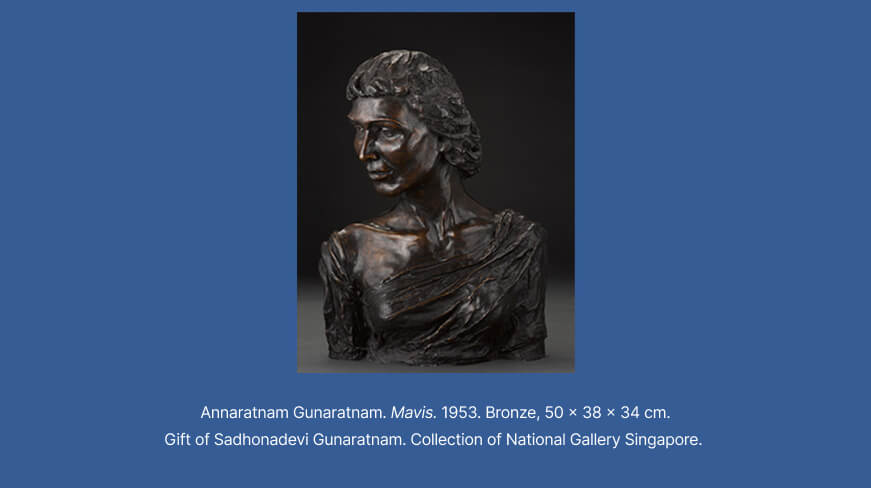

Mavis
This expressive sculpture of a Eurasian girl is one of the
earliest known works by an Indian woman artist in Singapore.
Mavis humanises a community often underrepresented in historical narratives, contributing to a fuller picture of Singapore’s multicultural identity in the mid-20th century.
Located at: DBS Singapore Gallery 1
Mavis humanises a community often underrepresented in historical narratives, contributing to a fuller picture of Singapore’s multicultural identity in the mid-20th century.
Located at: DBS Singapore Gallery 1
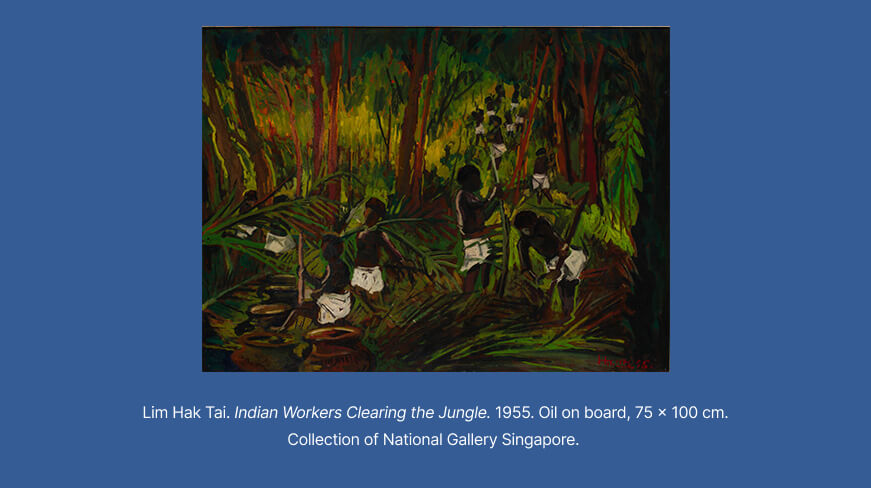

Indian Workers Clearing the Jungle
This early painting documents the contributions of migrant
labourers in transforming Singapore’s landscape.
Lim’s work captures a colonial-era moment when infrastructure development laid the foundations of modern Singapore – often through the hard labour of underrepresented communities.
Located at: DBS Singapore Gallery 1
Lim’s work captures a colonial-era moment when infrastructure development laid the foundations of modern Singapore – often through the hard labour of underrepresented communities.
Located at: DBS Singapore Gallery 1
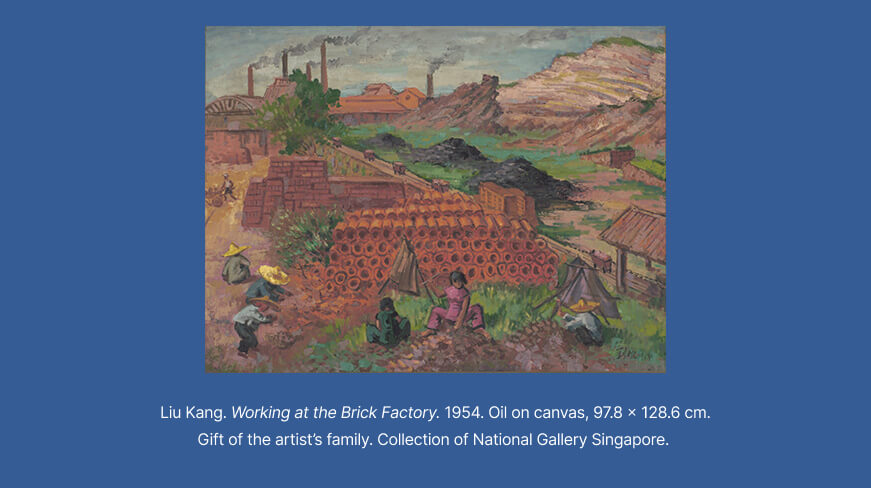

Working at the Brick Factory
Depicting labourers in the harsh environment of a brick kiln,
Liu Kang’s work pays tribute to the physical toil behind
Singapore’s early infrastructure.
It reflects the raw energy of industrialisation and the immigrant workforce who laid the foundation of the island’s transformation, one brick at a time.
Located at: DBS Singapore Gallery 1
It reflects the raw energy of industrialisation and the immigrant workforce who laid the foundation of the island’s transformation, one brick at a time.
Located at: DBS Singapore Gallery 1


Riot
With its multidirectional lines and charged palette, this
emotionally charged painting confronts the viewer with the
chaos and energy of civil disturbance – possibly referencing
the 1950 Maria Hertogh riots or other post-war unrest.
It reminds us of the fragile social fabric that had to be reconciled in the early days of nationhood.
Located at: DBS Singapore Gallery 2
It reminds us of the fragile social fabric that had to be reconciled in the early days of nationhood.
Located at: DBS Singapore Gallery 2
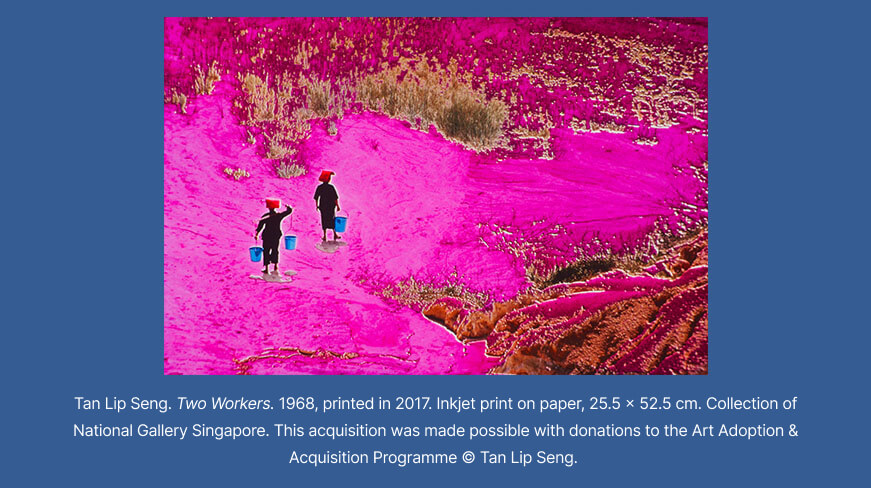

Two Workers
This photograph captures a quiet yet powerful moment between
two labourers.
As a pioneer in local photography, Tan documents the dignity of ordinary people whose contributions often went unrecognised. His work bridges documentary and artistic expression in chronicling Singapore’s working-class life.
Located at: DBS Singapore Gallery 2
As a pioneer in local photography, Tan documents the dignity of ordinary people whose contributions often went unrecognised. His work bridges documentary and artistic expression in chronicling Singapore’s working-class life.
Located at: DBS Singapore Gallery 2
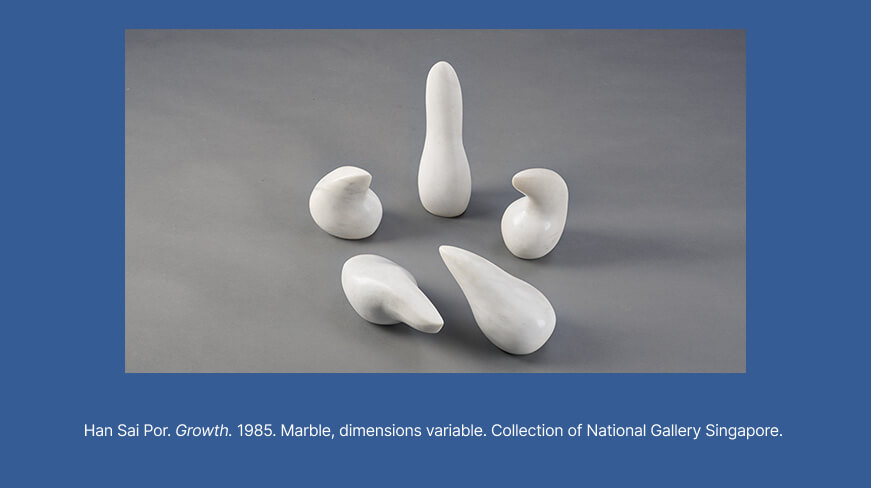

Growth
This monumental stone sculpture channels the energy of a city
in flux, metaphorically representing Singapore’s
transformation from a “Garden City” to a global metropolis.
Han’s organic forms reflect both natural and urban growth – evoking the nation's forward momentum in the face of space and resource limitations.
Located at: DBS Singapore Gallery 2
Han’s organic forms reflect both natural and urban growth – evoking the nation's forward momentum in the face of space and resource limitations.
Located at: DBS Singapore Gallery 2
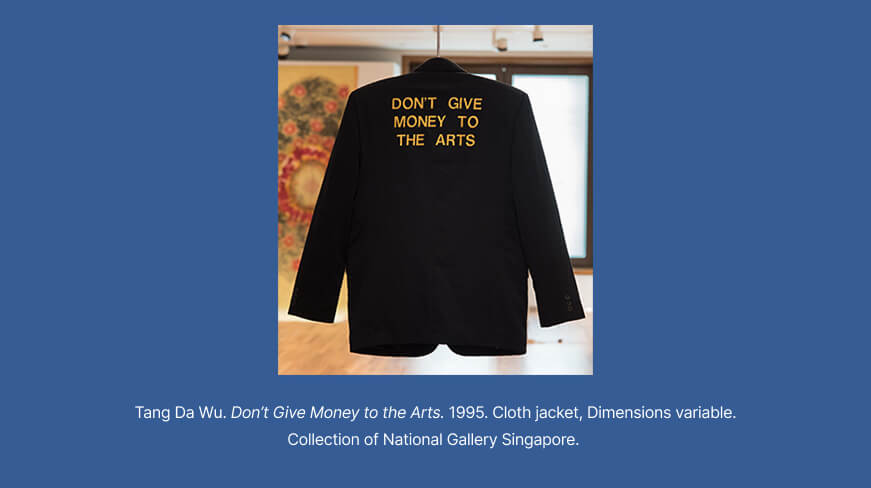

Don't Give Money to the Arts
This provocative work critiques state patronage and the commodification of art, emerging during a time when Singapore was grappling with cultural policy and artistic freedom. It marks a turning point where art becomes a form of civic discourse and critique.
Located at: Currently not on display
Located at: Currently not on display
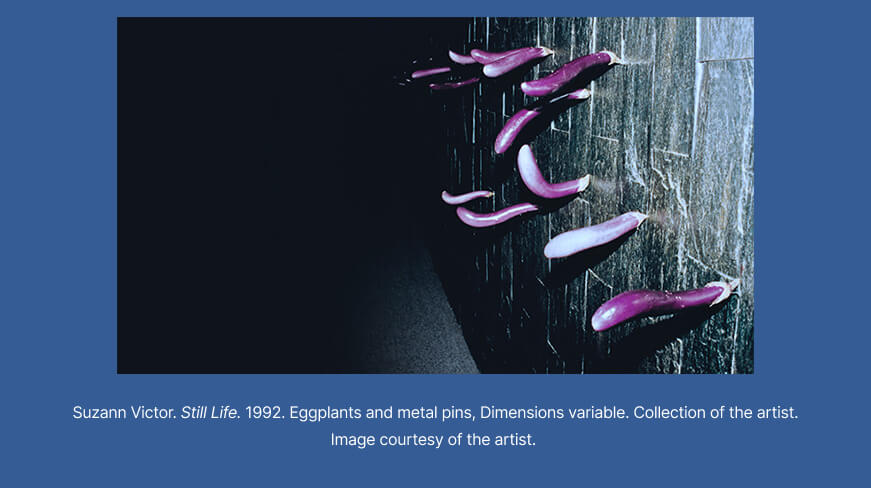

Still Life
Originally conceptualised in 1992 for Body Fields, a live performance event curated by 5th Passage at Parkway Parade, Still Life is considered an early example of site-specific installation in Singapore.
At the heart of the work is the humble aubergine, or brinjal – a perishable fruit that serves as a cheeky euphemism for the phallic. Decades before the emoji era, the reference was already at play, being provocative.
The work introduces several recurring motifs in Suzann Victor’s practice, such as the use of organic materials and the slow, inevitable process of decay to conjure the passage of time.
Located at: Walkway outside DBS Singapore Gallery 3
At the heart of the work is the humble aubergine, or brinjal – a perishable fruit that serves as a cheeky euphemism for the phallic. Decades before the emoji era, the reference was already at play, being provocative.
The work introduces several recurring motifs in Suzann Victor’s practice, such as the use of organic materials and the slow, inevitable process of decay to conjure the passage of time.
Located at: Walkway outside DBS Singapore Gallery 3



